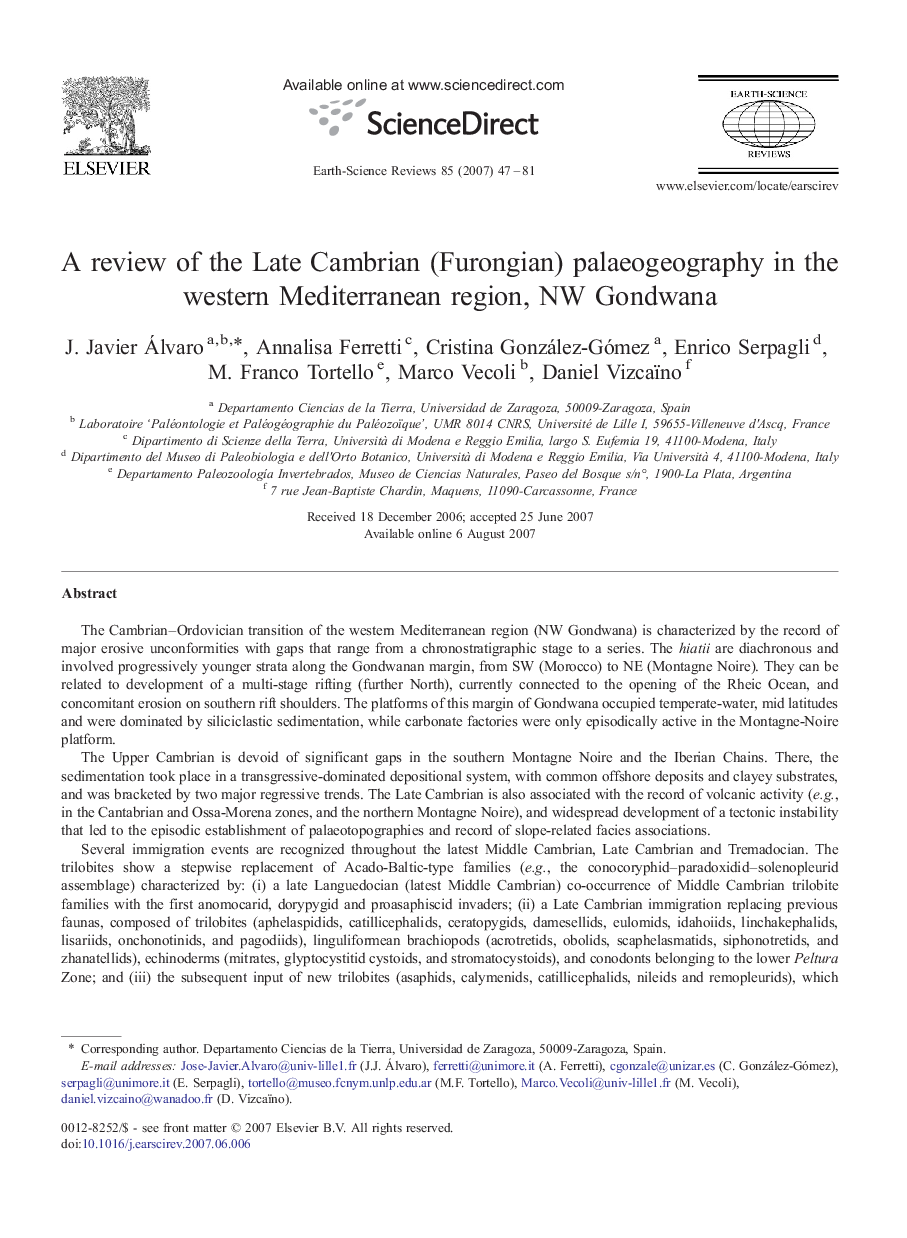| کد مقاله | کد نشریه | سال انتشار | مقاله انگلیسی | نسخه تمام متن |
|---|---|---|---|---|
| 4726432 | 1640039 | 2007 | 35 صفحه PDF | دانلود رایگان |

The Cambrian–Ordovician transition of the western Mediterranean region (NW Gondwana) is characterized by the record of major erosive unconformities with gaps that range from a chronostratigraphic stage to a series. The hiatii are diachronous and involved progressively younger strata along the Gondwanan margin, from SW (Morocco) to NE (Montagne Noire). They can be related to development of a multi-stage rifting (further North), currently connected to the opening of the Rheic Ocean, and concomitant erosion on southern rift shoulders. The platforms of this margin of Gondwana occupied temperate-water, mid latitudes and were dominated by siliciclastic sedimentation, while carbonate factories were only episodically active in the Montagne-Noire platform.The Upper Cambrian is devoid of significant gaps in the southern Montagne Noire and the Iberian Chains. There, the sedimentation took place in a transgressive-dominated depositional system, with common offshore deposits and clayey substrates, and was bracketed by two major regressive trends. The Late Cambrian is also associated with the record of volcanic activity (e.g., in the Cantabrian and Ossa-Morena zones, and the northern Montagne Noire), and widespread development of a tectonic instability that led to the episodic establishment of palaeotopographies and record of slope-related facies associations.Several immigration events are recognized throughout the latest Middle Cambrian, Late Cambrian and Tremadocian. The trilobites show a stepwise replacement of Acado-Baltic-type families (e.g., the conocoryphid–paradoxidid–solenopleurid assemblage) characterized by: (i) a late Languedocian (latest Middle Cambrian) co-occurrence of Middle Cambrian trilobite families with the first anomocarid, dorypygid and proasaphiscid invaders; (ii) a Late Cambrian immigration replacing previous faunas, composed of trilobites (aphelaspidids, catillicephalids, ceratopygids, damesellids, eulomids, idahoiids, linchakephalids, lisariids, onchonotinids, and pagodiids), linguliformean brachiopods (acrotretids, obolids, scaphelasmatids, siphonotretids, and zhanatellids), echinoderms (mitrates, glyptocystitid cystoids, and stromatocystoids), and conodonts belonging to the lower Peltura Zone; and (iii) the subsequent input of new trilobites (asaphids, calymenids, catillicephalids, nileids and remopleurids), which marks the base of the Proteuloma geinitzi Zone, associated with pelmatozoan holdfasts (Oryctoconus), and a distinct input of late Tremadocian conodonts (Paltodus deltifer Zone).The biogeographic distribution of latest Middle and Late Cambrian trilobites supports brachiopod data indicating strong affinities between the western Mediterranean region, East Gondwana (North China/Korea, South China, Australia, and Antarctica) and Kazakhstania during the late Languedocian, which became significantly stronger during the Late Cambrian. This major shift may suggest modification in oceanic circulation patterns throughout Gondwana across the Middle–Late Cambrian transition.
Journal: Earth-Science Reviews - Volume 85, Issues 1–2, November 2007, Pages 47–81